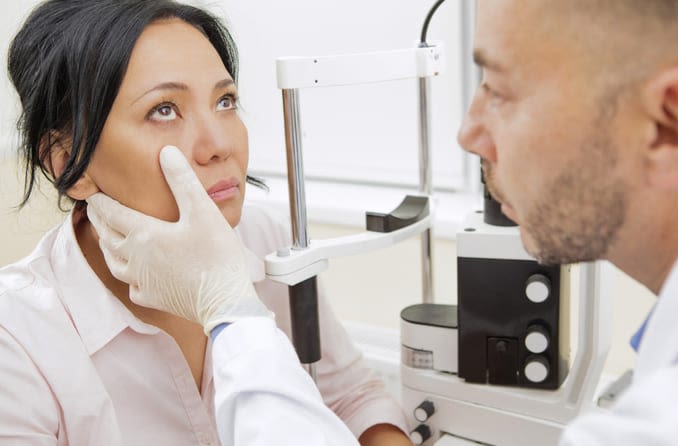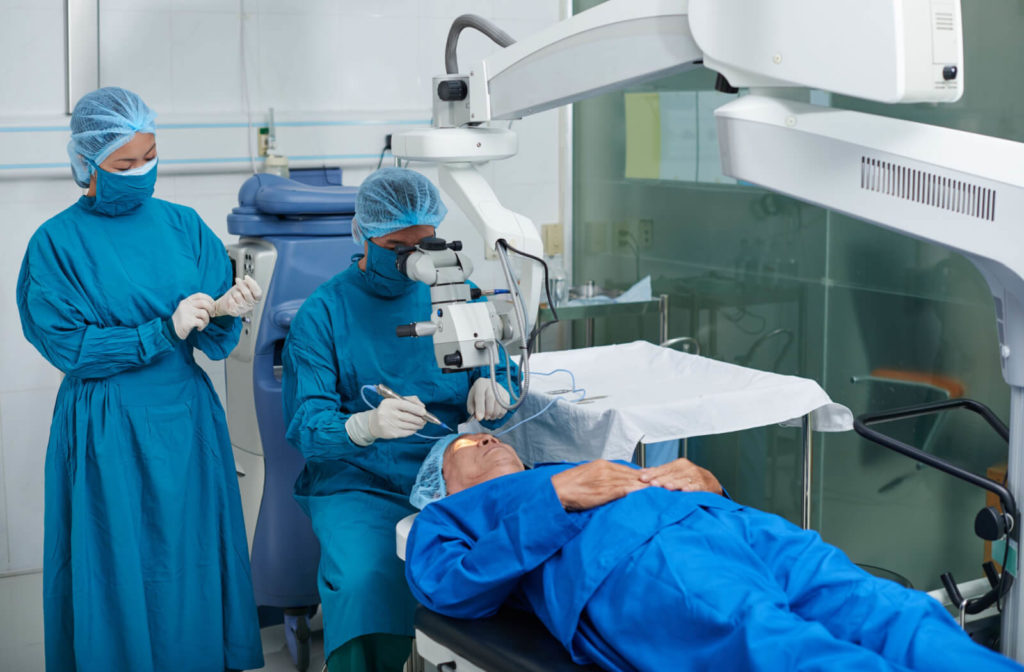Discovering the most up to date Technological Advancements in Optometry and What They Mean for Eye Doctors
From the precision of Optical Coherence Tomography to the nuanced understandings supplied by AI-driven diagnostic tools, these developments are establishing brand-new criteria in patient analysis and treatment. As these developments permeate the method, eye doctors are encountered with the obstacle of welcoming these tools to enhance patient results.
Advancements in Diagnostic Equipment
Progressing the area of optometry, technologies in analysis devices have actually transformed the way eye care professionals evaluate and identify eye problems and visual disabilities. The past years has actually experienced significant technological advancements, enabling more accurate and detailed examinations. Optical Comprehensibility Tomography (OCT), for instance, supplies high-resolution cross-sectional photos of the retina, permitting the very early discovery of illness such as glaucoma and age-related macular degeneration. This non-invasive imaging technique has actually come to be crucial in modern optometric method.
One more trick development is the introduction of sophisticated corneal topography systems, which map the surface curvature of the cornea with accuracy. These devices are especially beneficial for suitable contact lenses and diagnosing corneal disorders. Furthermore, digital retinal imaging has changed standard ophthalmoscopy, using comprehensive, scenic views of the retina that help with comprehensive aesthetic examinations.
The development of wavefront aberrometry has actually likewise been important, allowing the evaluation of refractive errors with unequaled precision (Eye Doctor Optometrist). This modern technology assists in customizing restorative lenses and improving medical results for refractive surgeries. Jointly, these diagnostic innovations empower eye doctors to deliver premium individual treatment, guaranteeing early treatment and tailored treatment strategies, inevitably enhancing aesthetic wellness outcomes
AI in Person Management
Structure on the structure of advanced analysis tools, the incorporation of expert system (AI) in individual management stands for a transformative jump for optometry. AI systems are increasingly used to boost effectiveness, accuracy, and personalization in individual treatment. By assessing vast quantities of data, AI can determine patterns and anticipate potential eye conditions, enabling eye doctors to tailor treatments better. This ability is essential in taking care of persistent eye diseases such as glaucoma and diabetic person retinopathy, where early discovery and constant monitoring are crucial.
In addition, AI-driven platforms promote streamlined individual communications and administrative procedures. Automated organizing, virtual examinations, and individualized follow-up strategies not just enhance person fulfillment yet also enhance time monitoring for specialists. These systems can triage individuals based upon the urgency of their conditions, making sure that those in critical requirement get punctual focus.
Furthermore, AI improves decision-making by supplying eye doctors with evidence-based referrals and therapy pathways. By integrating data from electronic health records, AI tools use understandings that educate professional choices, reducing the risk of errors and improving client results. As AI proceeds to progress, its function in individual monitoring will likely increase, reshaping the landscape of optometric treatment.
Developments in Retinal Imaging
In the realm of optometry, retinal imaging has observed exceptional technological innovations that are improving diagnostic look at this website capacities and individual treatment. Developments such as Optical Coherence Tomography (OCT) and fundus digital photography have changed exactly how optometrists assess the retina and envision.
Enhanced imaging techniques like OCT angiography are more refining diagnostic accuracy. Optometrist Chino. Such improvements facilitate the identification of min retinal modifications that can represent illness development.
Furthermore, improvements in fabricated intelligence are enhancing retinal imaging by allowing computerized evaluation of huge datasets. These systems assist optometrists in determining patterns a sign of pathology, therefore boosting diagnostic accuracy and efficiency. Collectively, these developments are transforming retinal imaging into a foundation of contemporary eye treatment, enhancing results and increasing healing opportunities.
Teleoptometry's Expanding Duty
Teleoptometry is significantly becoming an essential part of eye care, driven by advancements in electronic interaction and diagnostic devices. This is especially advantageous in underserved and rural locations where access to specialized eye treatment is commonly restricted.
The integration of fabricated intelligence (AI) further improves teleoptometry, enabling the evaluation of visual information and aiding in the discovery of ocular problems such as glaucoma and diabetic retinopathy. AI-powered formulas can rapidly translate complex imaging information, providing eye doctors with important understandings that reinforce professional decision-making.
Furthermore, teleoptometry sustains continuity of treatment via seamless assimilation with electronic wellness records (EHRs), enabling eye doctors to maintain detailed patient histories. This makes certain that clients obtain constant and customized treatment also when seeking advice from various experts.
In spite of these benefits, obstacles remain, including guaranteeing information protection and taking care of patient expectations. Nonetheless, teleoptometry represents a considerable stride in the direction of even more obtainable, efficient, and patient-centered eye care. As technology develops, its role is poised to increase better.

Future Trends in Eye Care
A myriad of cutting-edge fads is readied to improve the future of eye care, driven by technological developments and the evolving needs of patients. One substantial fad is the combination of expert system (AI) in diagnostics, which promises to boost the accuracy and effectiveness of eye examinations. AI formulas can evaluate large amounts of information from retinal pictures, potentially detecting problems like diabetic retinopathy and glaucoma earlier than traditional approaches.
Additionally, individualized medicine is getting grip in optometry, with genetic screening notifying customized therapy plans. This technique aims to optimize individual results by customizing interventions to individual hereditary profiles. Wearable modern technology, such as wise contact lenses, is likewise imminent, supplying real-time tracking of intraocular stress or glucose degrees, thus supplying continuous understandings into systemic and ocular health and wellness.
The adoption of enhanced fact (AR) and online fact (VR) in training and individual education is one more arising trend. These modern technologies provide immersive experiences that can boost understanding and skills both for optometrists and people. As these fads develop, eye doctors must stay abreast of technical improvements to provide innovative treatment, ensuring enhanced individual results and contentment in the dynamic landscape of eye care.
Final Thought

Jointly, these analysis developments empower eye doctors to supply exceptional patient treatment, guaranteeing early treatment and tailored therapy techniques, ultimately boosting visual health results.

As these modern technologies proceed to develop, eye doctors have to adapt and incorporate them into technique, ultimately optimizing process performance and boosting the standard of eye care delivered to individuals.